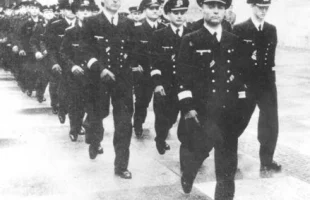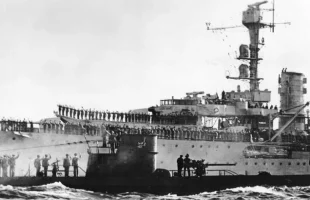World War II – HMS Royal Oak
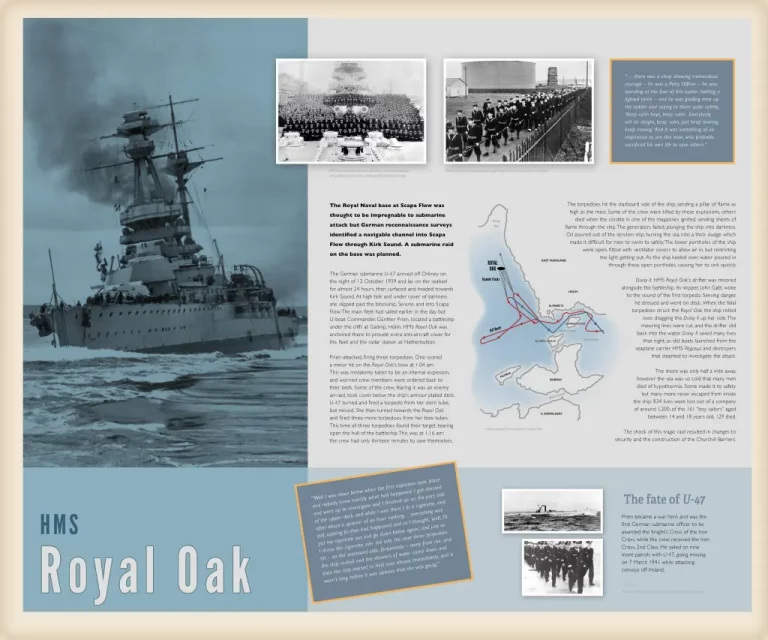
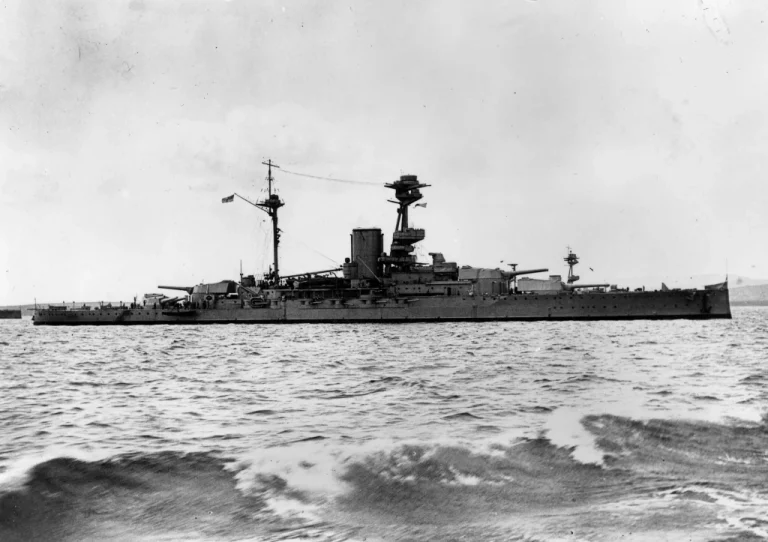
The Royal Naval base at Scapa Flow was thought to be impregnable to submarine attack but German reconnaissance surveys identified a navigable channel into Scapa Flow through Kirk Sound. A submarine raid on the base was planned.
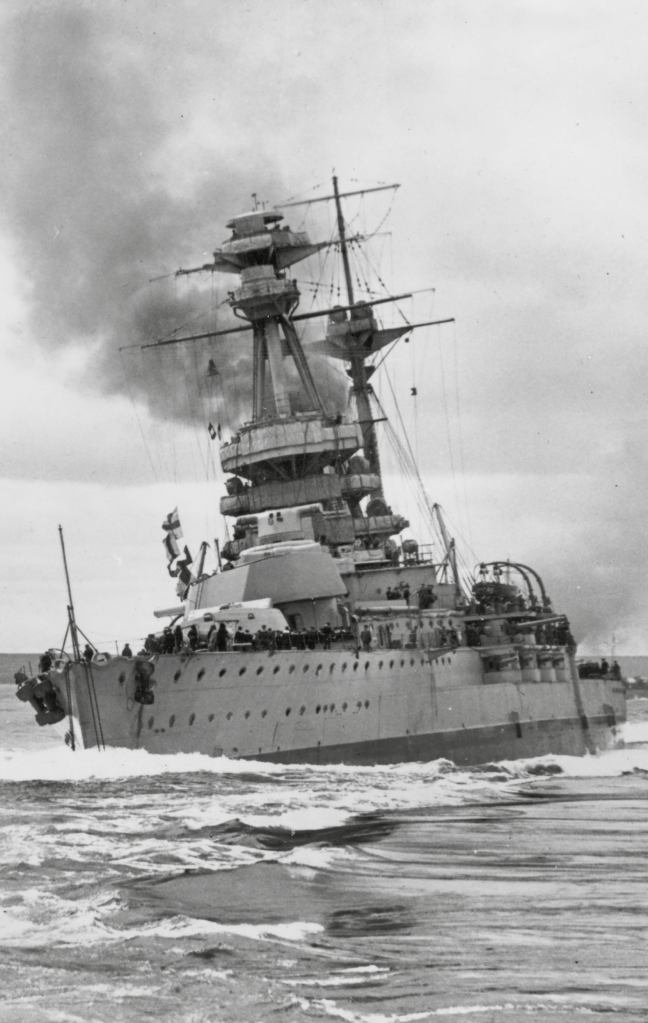
The German submarine U-47 arrived off Orkney on the night of 12 October 1939 and lay on the seabed for almost 24 hour s, then surfaced and headed to wards Kirk Sound. At high tide and under cover of darkness she slipped past the blockship, Seriano, and into Scapa Flow.
The main fleet had sailed earlier in the day but U-boat Commander, Günther Prien, located a battleship under the cliffs at Gaitnip, Holm.
HMS Royal Oak was anchored there to provide extra anti-aircraft cover for the fleet and the radar station at Netherbutton.

Prien attacked, firing three torpedoes. One scored a minor hit on the Royal Oak’s bow at 1.04 am. This was mistakenly taken to be an internal explosion, and worried crew members were ordered back to their beds. Some of the crew, fearing it was an enemy air-raid, took cover below the ship’s armour plated deck.
U-47 turned and fired a torpedo from her stern tube, but missed. She then turned towards the Royal Oak and fired three more torpedoes from her bow tubes.
This time all three torpedoes found their target, tearing open the hull of the battleship . This was at 1.16 am: the crew had only thirteen minutes to save themselves.
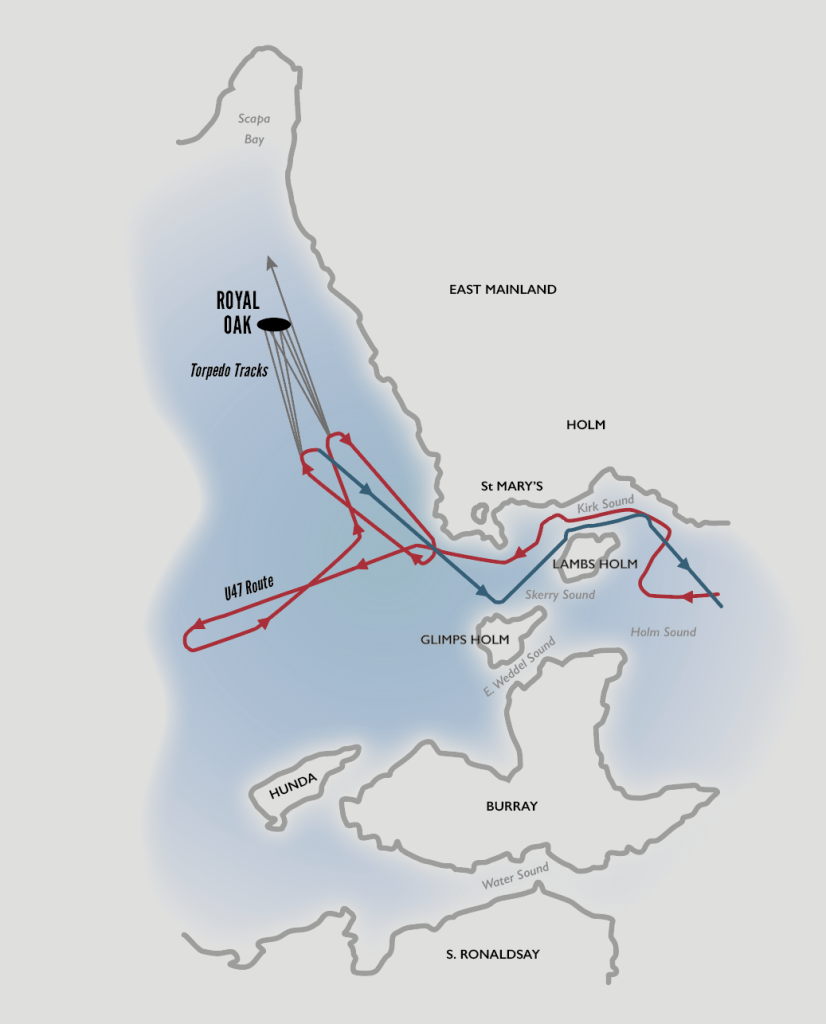
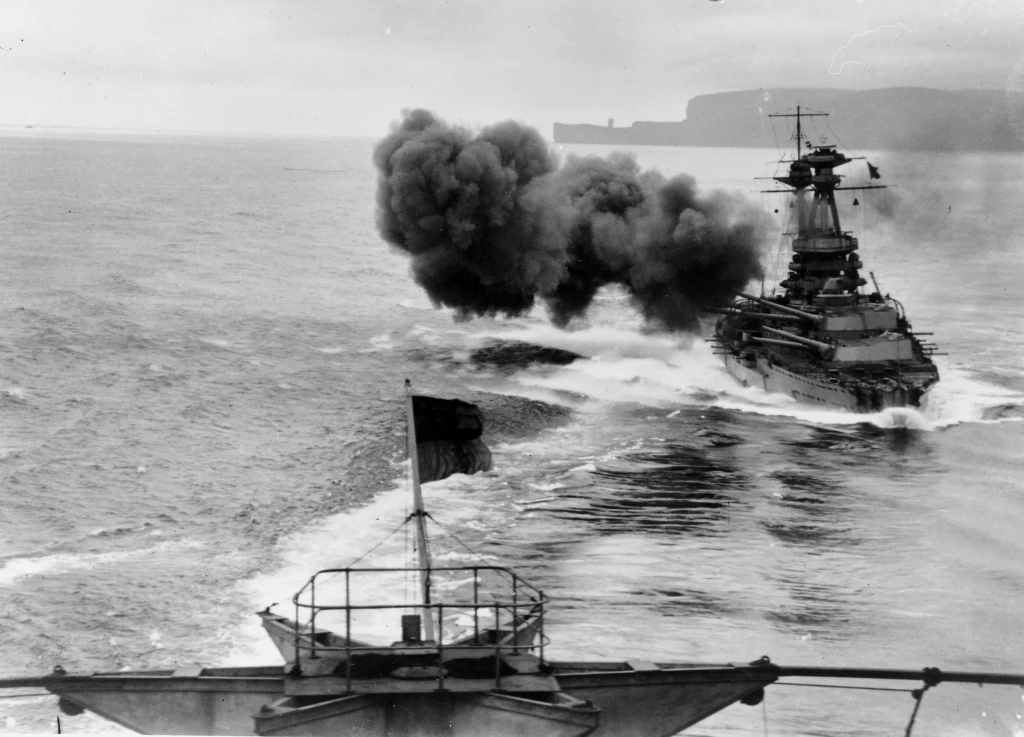
The torpedoes hit the starboard side of the ship , sending a pillar of flame as high as the mast. Some of the crew were killed by these explosions, others died when the cordite in one of the magazines ignited, sending sheets of flame through the ship.
The generators failed, plunging the ship into darkness. Oil poured out of the stricken ship, turning the sea into a thick sludge which made it difficult for men to swim to safety.
The lower portholes of the ship were open, fitted with ventilator covers to allow air in, but restricting the light getting out. As the ship keeled over, water poured in through these open portholes, causing her to sink quickly.
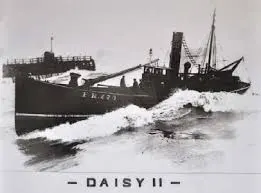
Daisy II, HMS Royal Oak’s drifter, was moored alongside the battleship. Its skipper, John Gatt, woke to the sound of the first torpedo. Sensing danger, he dressed and went on deck. When the fatal torpedoes struck the Royal Oak the ship rolled over, dragging the Daisy II up her side.
The mooring lines were cut, and the drifter slid back into the water. Daisy II saved many lives that night, as did boats launched from the seaplane carrier HMS Pegasus and destroyers that steamed to investigate the attack.
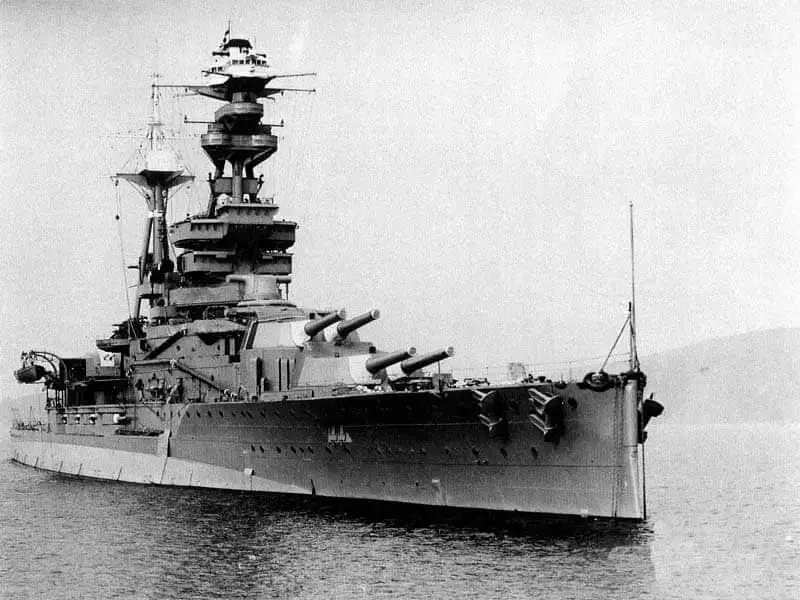
The shore was only half a mile away, however the sea was so cold that many men died of hypothermia. Some made it to safety but many more never escaped from inside the ship: 834 lives were lost out of a company of around 1, 200; of the 161 “boy sailors” aged between 14 and 18 years old, 129 died.
The shock of this tragic raid resulted in changes to security and the construction of the Churchill Barriers.
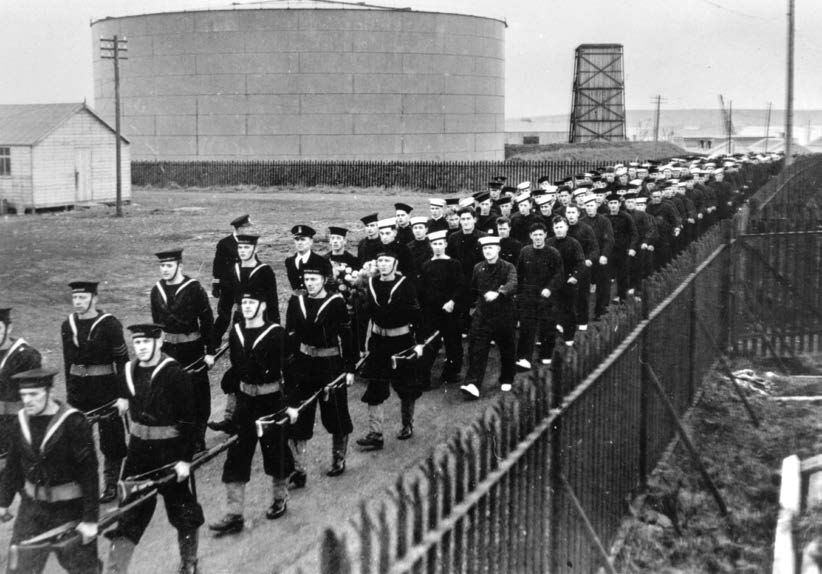
“….there was a chap showing tremendous courage – he was a Petty Officer – he was standing at the foot of this ladder holding a lighted torch – and he was guiding men up the ladder and saying to them quite calmly, ‘Keep calm boys, keep calm. Everybody will be alright, keep calm, just keep moving, keep moving.’ And it was something of an inspiration to see this man, who probably sacrificed his own life to save others.”
“Well I was down below when the first explosion took place and nobody knew exactly what had happened. I got dressed and went up to investigate and I finished up on the port side of the upper deck and while I was there I lit a cigarette, and after about a quarter of an hour nothing… everything was still, nothing further had happened and so I thought, ‘well, I’ll put my cigarette out and go down below again,’ and just as I threw the cigarette over the side the next three torpedoes hit – on the starboard side, fortunately – away from me , and the ship rocked and the showers of water came down and then the ship star ted to heel over almost immediately, and it wasn’t long before it was obvious that she was going.”
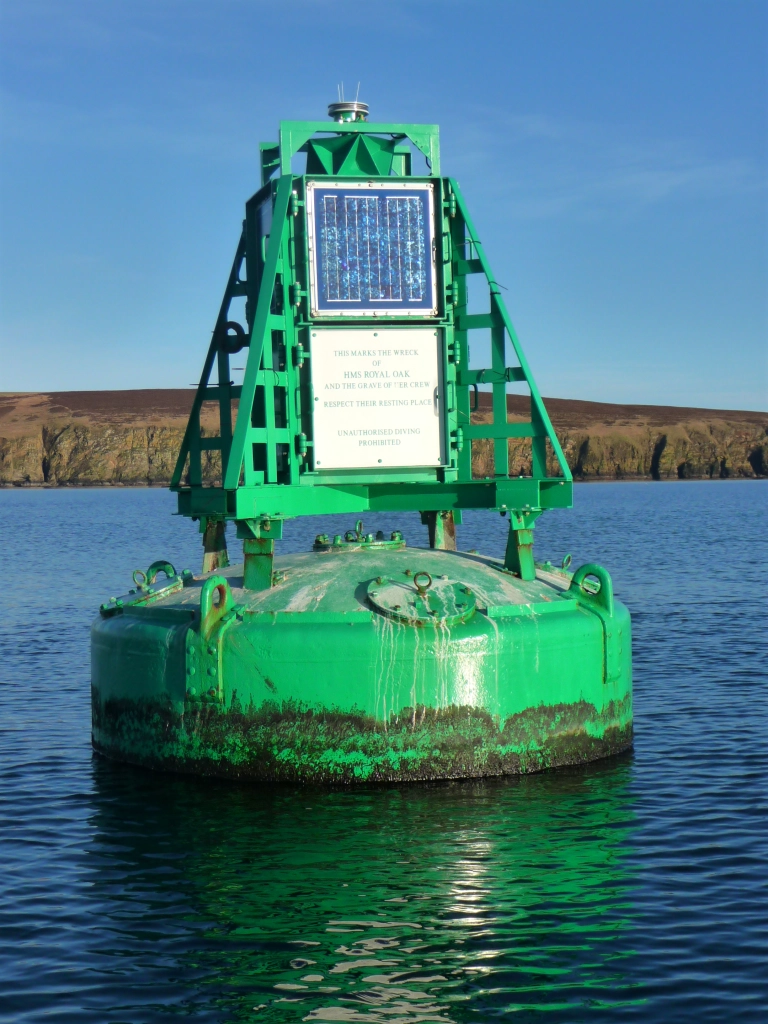
The fate of U-47
Prien became a war hero and was the first German submarine officer to be awarded the Knight’s Cross of the Iron Cross, while the crew received the Iron Cross, 2nd Class. He sailed on nine more patrols with U-47, going missing on 7 March 1941 while attacking convoys off Ireland.
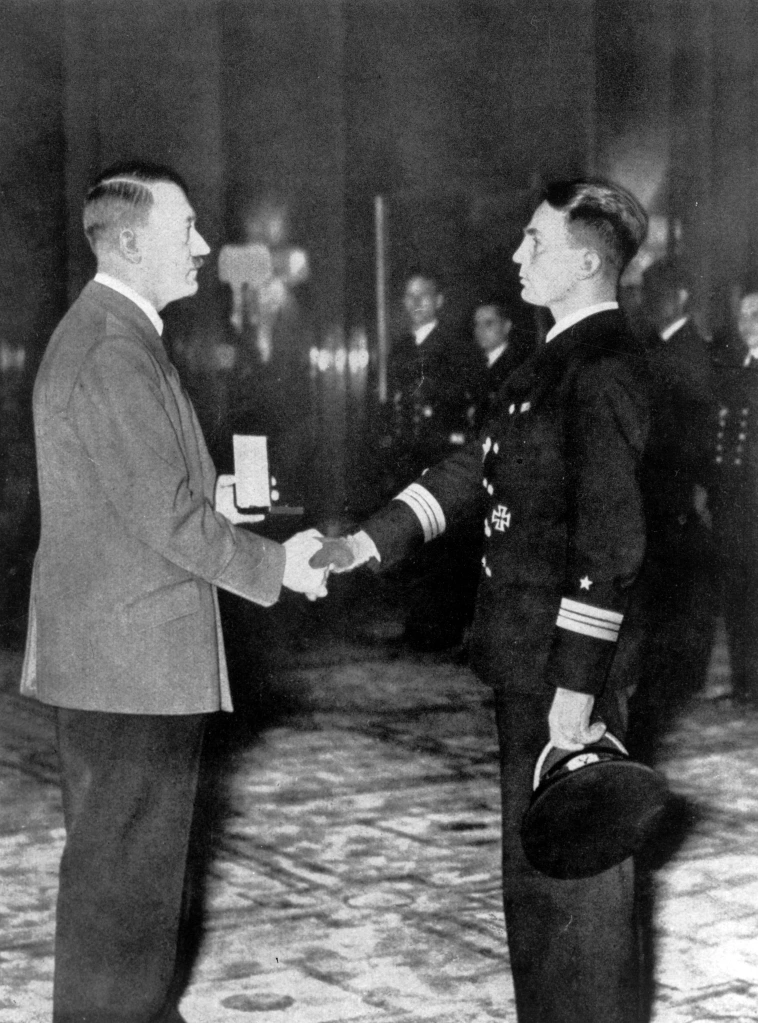
Scapa Flow Museum is currently closed for a major refurbishment project, funded by Orkney Islands Council, National Lottery Heritage Fund, Historic Environment Scotland, Highlands and Islands Enterprise, Museums Galleries Scotland, Scottish Natural Heritage and the Orkney LEADER fund. The project includes carrying out essential repairs to Pumphouse No. 1 and building an extension to house a new gallery, visitor facilities and café.
Visitors can virtually explore the buildings and former exhibitions at www.hoydrone.com/museum, a 3600 photo record of the main site museum site.
The Island of Hoy Development Trust website www.hoyorkney.com has a large Wartime Heritage section focusing on the WW2 history of Hoy.

